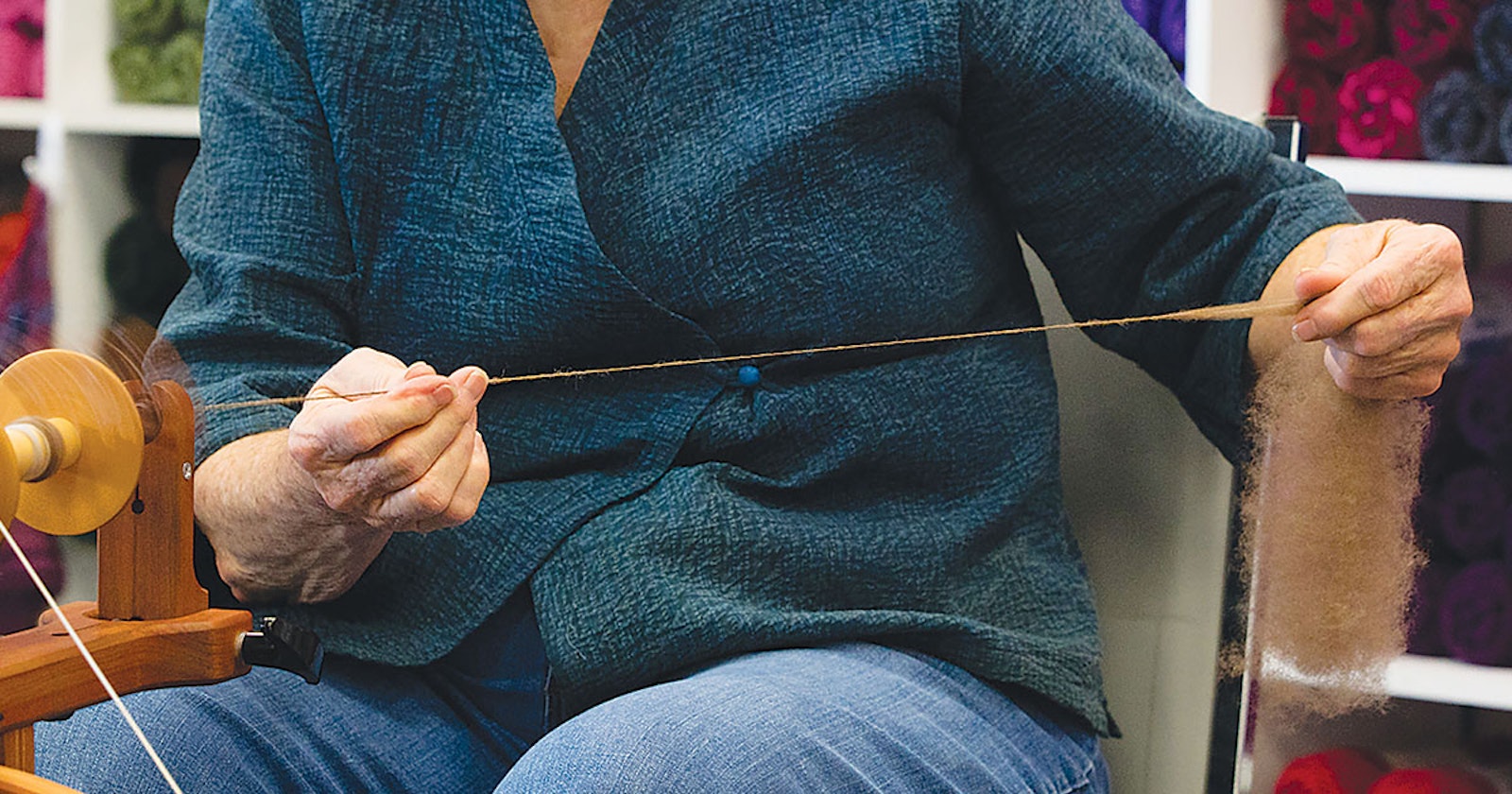Next time you’re spinning, stop and take a look at your drafting method. Twist holds both woolen and worsted yarn together. In the Winter 2019 issue ofSpin Off, contributor Andrea Mielke Schroer explores where the drafting twist resides in her article, “Head in the Clouds: Exploring Carded Cloud Preparations.”
I think “drafting against twist” is a logical, self-explanatory description for a woolen draft, which is traditionally used with carded fibers (affiliate link). Conversely, “drafting without twist” is a good description for a worsted draft, traditionally used with combed fibers (affiliate link). I learned these terms from Alden Amos (The Alden Amos Big Book of Handspinning_, pages 41–42) and think they are a clear way to describe two of the most common drafting methods.
Drafting against twist: The forward hand allows twist to enter between the hands, and drafting occurs where the twist meets the fiber supply. Photo by Andrea Mielke Schroer
Drafting Against Twist
Holding a clump of cloud in my nondominant hand, I use the thumb and index finger of my dominant hand to pinch the newly spun yarn. I open these pinching fingers frequently, allowing the twist to run into the drafting zone between my hands. Drafting occurs where the twist meets the fiber supply. To draft, I can pull back with my fiber-holding hand, or I can pinch and pull forward on the yarn with my dominant hand’s thumb and index finger.
Drafting without twist: The forward hand does not allow twist to enter between the hands, where drafting occurs. Photo by Andrea Mielke Schroer
Drafting Without Twist
With a handful of cloud in my nondominant hand, I use the thumb and index finger of my dominant hand to pinch the point where the twist meets the unspun fiber. I do not allow the twist to enter the drafting zone between my hands. When drafting, I can pinch with my forward hand and pull back with my fiber-holding hand, or I can pinch and pull forward on the yarn, keeping my fiber hand stationary.
—Andrea Mielke Schroer
Andrea Mielke Schroer lives in central Wisconsin and co-owns Mielke’s Fiber Arts. She has reached that awkward stage where admitting how long she has been spinning gives away more about her age than she would like to share publicly. Andrea has been spinning for 30 years and teaching for over 20 years. In short, she has had plenty of time to make mistakes and hopes to help save you from a few.
Featured Image: Maggie Casey demonstrates long draw or drafting against twist. Photo by George Boe



